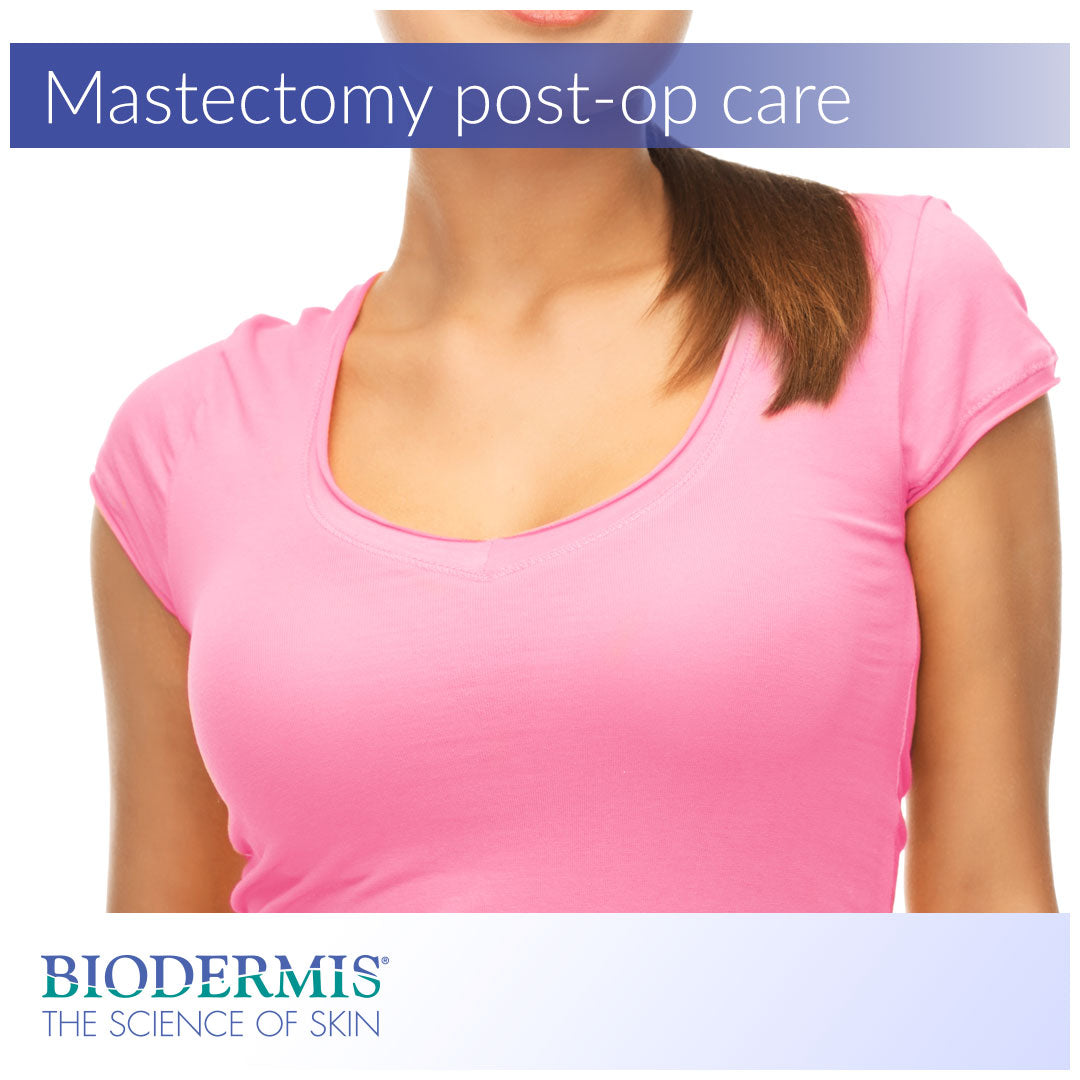A mastectomy is the surgical removal of one or both breasts following the diagnosis of breast cancer. A partial or total mastectomy may be required depending on cancer aggressiveness, breast size, and a number of other factors. Depending on the extent of the procedure, a mastectomy can leave multiple scars of up to 8 inches in length or longer.
Ensuring the best cosmetic outcome after a mastectomy can prove to be a big challenge. But there is a light at the end of the tunnel. Continue reading to learn more about breast cancer and what you can do to care for yourmastectomy scars and help yourself feel whole again.
More about breast cancer and mastectomies
Breast cancer occurs when abnormal cells in the breast tissue divide uncontrollably and become destructive to surrounding tissue. A mastectomy is a way to excise the cancerous tissue to prevent it from spreading to other vital organs in the body. Two types of tumors can form in the breast—benign (uncancerous) and malignant (cancerous). If a benign tumor is found in the breast, a lumpectomy—a less invasive form of surgery that conserves most of the breast—might be an option. If a tumor in the breast is malignant, a mastectomy is likely to be considered.
Behind skin cancer, breast cancer is the second most common type of cancer that affects women. According to the American Cancer Society, more than 266,000 women will be diagnosed with breast cancer in 2018. Approximately 1 in 8 women, or 12%, will be diagnosed in their lifetimes.


Various mastectomy procedures are performed in response to cancer aggressiveness. These include the following.
Total Mastectomy - A total mastectomy, also known as a “simple” mastectomy, is the entire removal of one or both breasts to extract cancerous tissue and prevent it from spreading. This includes removal of the breast tissue, areola, nipple, and skin. A total mastectomy does not necessarily include removal of axillary lymph nodes in the underarm area.
Modified Radical Mastectomy - A modified radical mastectomy is the removal of the entire breast and the lymph nodes in the underarm area. Lymph nodes are present throughout the body as part of the lymphatic system, but if they become swollen, it could be a sign of cancer. These procedures are often performed when cancer aggressiveness is perceived to have invaded nearby tissue, not just in the breast.
Radical Mastectomy - A radical mastectomy is the most surgically invasive form of mastectomy, which involves the complete removal of the breast and the muscles beneath the breast, in addition to the removal of underarm lymph nodes. Thanks to medical advancements, these procedures are less common because modified radical mastectomies have proven to be as effective.
Do I have breast cancer?
Most people assume that breast cancer only affects women, but did you know that men can get breast cancer too? Though breast cancer in males is much less common, symptoms are practically the same in both male and female populations. To determine if you have breast cancer, you can evaluate yourself by feeling for lumps in the breast area. Though lumps don’t necessarily indicate cancer, they may warrant a visit to your doctor. Other symptoms include bloody discharge from the nipple and transformations in the shape and texture of the breast or nipple.
It’s important to note that self-evaluations should never be performed in place of a doctor’s evaluation. If you are experiencing any of the before-mentioned symptoms, see a doctor immediately.
Regain your beauty and confidence
The decision to have a mastectomy after being diagnosed with breast cancer can be a traumatic experience. The loss of a significant portion of your body might make you feel incomplete or less beautiful. But true beauty comes from inner strength and a persistence to face adversity, with, perhaps, a little help from a few products.
Breast removal scars can be unsightly and cosmetically unappealing, but there are clinically-proven ways to reduce their appearance. To prevent or reduce irregular scarring after your mastectomy, it’s important to facilitate a healthy wound-repair response. Silicone gel sheeting for scar therapy was designed specifically for this purpose.
Medical-grade silicone has been on the market for over 30 years and numerous clinical studies support its effectiveness in flattening and reducing keloid and hypertrophic scar formations. Silicone gel is safe for all skin types and works by inducing skin hydration and regulating collagen. This method is the most potent topical solution currently available for scar treatment and should be considered before investing in costly cosmetic procedures.

If you’re feeling self-conscious about having lost one or both breasts from a mastectomy, one product that may help you feel whole and confident again is MIA® Breast Forms. MIA® is a brand made by women for women, with a mission centered on helping women achieve their ideal post-surgical silhouette. MIA® donates 2% of sales to breast cancer foundations dedicated to educating and supporting women who face this terrible disease. MIA® prosthetic breast forms come in triangular and anatomical forms, with different sizes to fit the individual’s desired shape.
Where can I find these products?
Biodermis is an innovative market leader with 30 years of expertise in the medical silicone industry. Visit Biodermis.com today to explore a complete range of scar management and post-operative care solutions.
Biodermis offers custom tailored referral programs designed to simplify and reduce the cost of your patients' post-op care. Additionally, we offer professional pricing if you opt to retail our products. Give us a call at 800.322.3729, and we will be happy to provide additional details on these programs.





